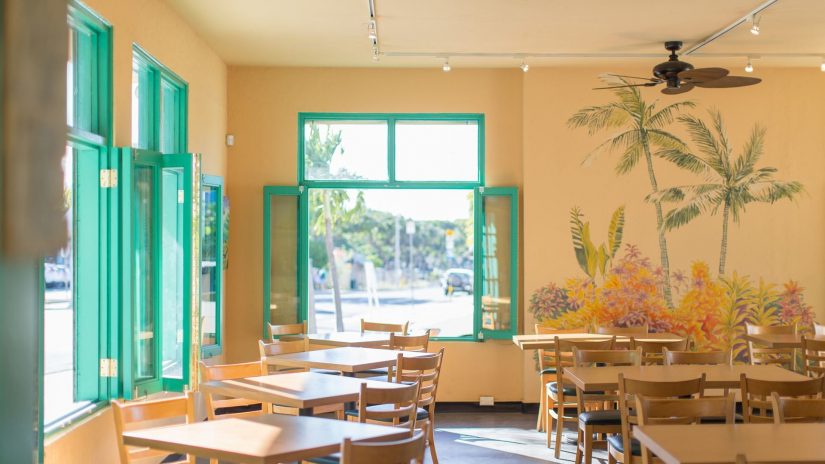Even in the recent past, Hawaiian cuisine was not distinguished by anything remarkable. Lunch meant a piece of pizza with pineapple, or food prepared from semi-finished products brought from the mainland, or the so-called “local food”, the recipes of which were changed according to the tastes of Westerners. However, for two decades now, Hawaii has been undergoing a culinary revolution and the birth of Hawaiian regional cuisine.
Hawaiian chefs use fresh, local ingredients such as fresh ocean fish, Asian spices, tropical fruit sauces and combine them in new ways. The result is new dishes that have earned high praise from gourmets from around the world.
In addition to gourmet dining, Hawaii also has a simpler local cuisine, a food that is eaten daily by the islanders and which testifies to the mixing of different cultures and traditions on the island. The most popular dish among the locals is the so-called. a “dinner plate” that includes fish, chicken, or beef teriyaki and a serving of rice, pasta, salad, brown gravy, served on a paper plate. These lunches can be ordered at many restaurants and waterfront cafes. Fried pork, coconut milk or pudding and poi, the roots of the taro plant crushed into purple cream, are also popular.
In general, the local cuisine is high in calories and rich in starch. The best island food can be found in small family run restaurants, which are mostly inexpensive and serve large portions. You will find them everywhere. It can be a restaurant in the center of Waikiki or in a small town on the other side of the island, or a cart right by the road.
A Hawaiian dinner can be a bit of an adventure. Dozens of ocean fish species with unfamiliar names such as ahi, opakapaka, mahimahi and ulua, a rich assortment of vegetables grown on the fertile land of Hawaii. And the real discovery will be local fruits: sweet aromatic mangoes, papaya, lychee, liliko (passion fruit), carambola, guava and a wide variety of pineapple and banana names. In addition, meat is grown in Hawaii and the Big Island is home to the largest cattle ranch in the United States, with 50,000 head.
The unique Hawaiian Luau Festival is one of the best opportunities to sample good local food and have a good time. At the entrance you will be greeted with a garland of flowers or seashells and escorted to your seat. Some luau guests will be invited to participate in a variety of contests and performances such as making garlands, throwing spears and hula dancing. You will understand that the festival is about to begin when you see that they are digging a roast pig from an earthen oven – imu.
Roasted suckling pig takes center stage on the festive table, where you will also find other traditional dishes – lomi-lomi, salmon, taro rolls and poi. As for the poi cream, it is better to eat it with something else, since it is essentially a rather thick starchy paste without much taste, which is still worth trying. To satisfy the tastes of different guests, the festival also features American and European cuisines, fruits and delicious desserts. After dinner, it’s time for an evening entertainment program – Polynesian songs, drums and dances. The Fire Samoan Knife Show usually ends the show.
Due to the proximity of Asia and the large population of Asians, Hawaiian cuisine is most influenced by the Orient. The prosperity of Asian restaurants on the islands speaks for itself. Still, Hawaii has become a culinary mecca with food from all over the world.
